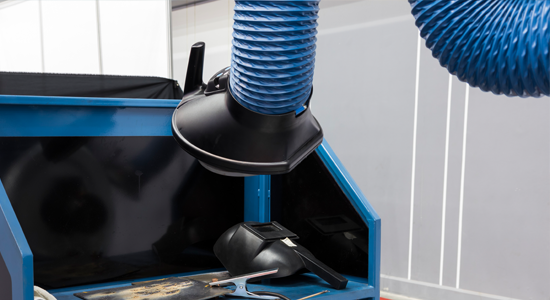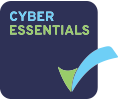Control measure for your LEV system
An LEV system is used to remove airborne contaminants such as dust, fumes, smoke etc to prevent them causing harm to workers.
An example of this would be an extractor at a welding station or paint spraying booth for instance.
The hierarchy of control should always be applied when deciding on control measures for any hazard, these points are as follows (and in that order)
- Elimination of the hazard altogether
- Substitute the substance for a less hazardous one (could it be a solid instead of a liquid for instance)
- Engineering controls (this is where the LEV comes in, potentially even a “fume cabinet” – physical controls to reduce the risk)
- Administrative controls – so process and procedures (risk assessment and safe systems of work etc)
- Finally… PPE / RPE which should be a last resort- so goggles, respirator, gloves etc.
Plan
If you can’t control in another way, some key points to bear in mind when choosing to install an LEV system as a control measure are:
- Conduct a thorough risk assessment to identify where the issues are- this may need to involve air monitoring by a competent environmental service provider depending on the substance.
- Ensure the system is effective for your needs and the specific hazard it is intended to control.
- Engage with employees who will have valuable “on the job” experience.
- Where will the extracted air discharge to? Is there an adequate filter if one is required?
Action
- Once installed, the system must be maintained properly and its effectiveness confirmed. There is a requirement for a thorough examination every 14 months by a competent and suitably qualified person. The examiner should complete a log book and label the device so that it is clear when the last inspection took place.
- Consider airflow indicators, which although aren’t a legal requirement currently, will give an indication if there has been a fault / blockage preventing the LEV doing its job properly.
- Train your people on how to use the equipment effectively. Implement a safe system of work so it’s documented on how to use it properly.
- Ensure there is a clear process of what to do if someone suspects there to be a fault with the system - who do they report it to? Is there a backup / continuity plan?
Recently a Basingstoke company was prosecuted for not having adequate extraction when workers were exposed to fumes which led to the development of occupational asthma.
They pleaded guilty to breaching Regulation 7 (1) Control of Substances Hazardous to Health (amended) Regulations 2002 and were fined £12,000 and ordered to pay costs of £6385:32.
Quest are able to provide advice and support so don’t hesitate to get in touch with the Qdos experts - we can support you with risk assessment, we can also help with various training courses including:
Accident Investigation Training or Safety Awareness & Risk Assessment Training, plus other training such as COSHH Awareness, Fire Marshal and Work at Height.
We are also able to offer site audits to identify gaps in your safety management system and work with you to guide you through the improvement process.
Contact us today and stay safe.






